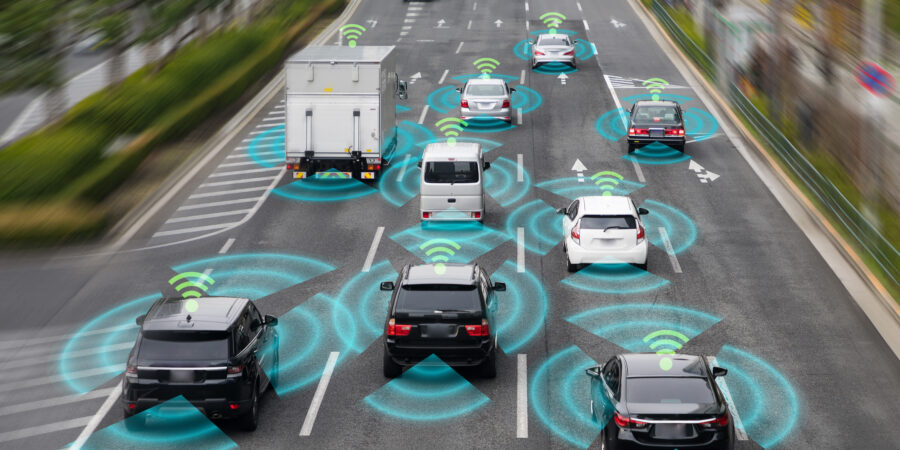What to Know about Self-Driving Cars
Over the past decade, there have been great technological improvements with self-driving cars. Although they seem to take a lot of hassle out of traveling over the roads, there are potential dangers. Therefore, it is essential to understand the pros and cons of these vehicles and to discover how autonomous cars relate to personal injury law.
Dangers of Self-Driving Cars
Even though experts foresee autonomous vehicles as the future of the automobile industry, there are certain dangers that exist within these vehicles. The premise behind these cars is centered in three computers. One computer is used as a global position satellite that sets the route of the traveler. The second computer controls the car’s operations. For example, it is responsible for the steering, braking, and acceleration. The third computer takes the GPS relays and sends the data to the operational computer so that the vehicle moves at the right speed, turns properly, and stops when necessary.
There are three major dangers that are associated with self-driving vehicles.
- Accidents on the Road. Obviously, autonomous cars run on unpredictable infrastructure. When sudden road changes develop, it may be hard for this type of vehicle to adapt. Also, weather-related conditions may hamper the vehicle’s function. Most importantly, a self-driving vehicle may give a person a false sense of security. Certainly, a driver may become complacent and fail to react to problems on the road.
- Vehicle Hacks and Malfunctions. Since an autonomous vehicle rests on its computer systems, it may be hacked at any time. This may compromise safety. For instance, a hacker my take control of a car and use it as a weapon. Also, it is possible for a hacker to overtake control of the car’s steering and to kidnap the driver and passengers.
- Malfunctions are possible as well. Glitches are evident within a computer system. Therefore, an autonomous car may act unpredictably or stop on the road. This can be dangerous and lead to a car accident, especially at high speeds. This opens the door for a personal injury claim.
- Heightened Radiation Exposure. Autonomous cars may heighten a person’s exposure to electromagnetic field radiation. This can lead to negative health effects, including headaches, exhaustion, and lowered immunity. Certain medical cases have reported eye problems, shortness of breath, and fluctuating blood pressure.
How Manufacturers Have Put Safety Measures in Place for Autonomous Cars
- Emergency Braking Systems. One of the most important safety features in an autonomous vehicle is an an emergency braking system that helps to avoid collisions with pedestrians and other cars. This type of equipment has a number of cameras and radar sensors that guard against moving objects. When threats are detected, brakes are automatically applied so that crashes do not occur.
- Adaptive Cruise Control. This system makes the vehicle slow or accelerate at a pace that keeps up with other objects. Many systems are timed to stay two to four seconds behind another vehicle.
- Vehicle-to-Vehicle Communication. An important key to self-driving technology is communication between two cars. An autonomous vehicle must have access to all information about roadwork, weather, and other traffic concerns. V2V is based on cloud technology that lets cars receive and process data about its surroundings. This type of communication involves sharing predictive maintenance machine learning data, multi-layer maps, and real-time sensor data.
- Sensor Fusion. A crucial part of an autonomous vehicle is an Advanced Driver Assistance System. An ADAS receives and processes information with help from various sensors like rearview cameras and radar. Radar sensors can identify moving and non-moving objects in all types of weather conditions and at far distances.
- Lane Detection. Lane detection begins with planning the route of a trip in compliance with set parameters. Real-time information is received through sensors and is processed so that it keeps the vehicle on a safe path.
Comparing Popular Autonomous Vehicles
Tesla and Google lead the market of self-driving vehicles. Google‘s car originally started in 2009 at the company’s secret XLab, which was run by cofounder Sergay Brin. Over the years, it became its own company, which was named Wayno. In 2018, Wayno began operating a driverless taxi service in Arizona. On the other hand, Tesla is well-known for its electric car line. Elon Musk, founder, is determined to be known as the top autonomous vehicle producer in the world.
Google has vast experience in AI development, which tops any competitor in the segment. Also, Google has more engineering experience in creating an operating system for driverless vehicles. Tesla has the reputation for producing all-electric luxury automobiles that include “Autopilot” software that is key to the construction of a successful autonomous car.
Google gathers powerful data from its cars that are tested on real-life streets. Tesla collects real-world data from its cars being driven by Tesla owners. Google combines real-time information from Lider and other sensors, which creates a complete world map that predicts movements. Tesla uses computer vision for erecting a virtual picture of the world. Specifically, it utilizes forward-looking camera technology.
Pros and Cons of Self-Driving Cars
There are both pros and cons involved with autonomous vehicles.
Pros
- Prevents Crashes. Most car crashes are related to human error, including drunk driving. Having an autonomous vehicle can reduce accidents.
- Traffic Efficiency. Since self-driving vehicles communicate with each other in real time, it is possible to reduce traffic jams by automatically rerouting a car to a different road.
- Handicap-Friendly. Elderly people with hampered reflexes or individuals with physical handicaps will benefit from autonomous vehicles. These types of people do not physically have the capability to safely drive a vehicle. Autonomous cars provide safety and reliable transportation.
Cons
- Decreased Security. As discussed, hacking is a big negative associated with autonomous cars. Large numbers of vehicles share a network, so hacking a simple. This can wreak havoc on the road.
- High Cost. The technology associated with these types of vehicles is quite high. It is estimated to cost $250,000 to operate one of these cars.
- Machine Error. Some individuals argue that self-driving automobiles prevent accidents. However, machines are not perfect. A computer glitch can happen at any time and can place the driver in danger.
Insurance Concerns for Autonomous Vehicles
Insurance coverage is a big concern for the autonomous vehicle industry. Since technology is relatively new, there are a number of uncertainties surrounding how to determine liability in times of an accident with a self-driving automobile. Numerous personal injury cases may be filed. A personal injury attorney may help determine if an accident was caused by a driver, a car’s computer, or the manufacturer.
Going forward, most autonomous automobiles will likely absorb the most liability. For example, insurance carriers may create different products for clients with these cars. However, the current framework is regulated at the state level. In many states, laws require testing companies to have a minimum $5 million liability plan to cover accidental injuries, death, or property damage.
As far as the average consumer, rates may increase on personal policies. Although accident rates may decrease, the cost of repairs for these vehicles is quite high. A minor car accident may be extremely expensive to fix, especially when numerous sensors and cameras need to be replaced. To address cyber security issues, many insurance companies may let clients add a cyber security rider to a yearly policy.
Into the future, common insurance providers will weigh the benefits and risks associated with these cars in order to set policy rates. For example, they may consider data on driver behavior and ADAS variables. Due to the increased safety features, it is possible that premiums may be lower than fees for normal automobiles.
Impact on Ride Share Programs
In 2018, national attention was placed on the ride share industry when an Arizona woman was hit and killed by a self-driving Uber vehicle. The test vehicle involved was a Volvo and had a human driver behind the wheel at the time of the accident. Evidence proved that the crash was caused by failure to stop on behalf of the automobile. This type of experience has placed these vehicles in a negative light.
Crash Rate Statistics
Generally, autonomous cars are involved in more crashes. In 2021, there were 9.1 crashes per million miles traveled in these autos versus 4.1 crashes for traditional vehicles. On the bright side, injuries were less severe in the autonomous vehicle accidents. Tesla insists that its technology is safe. It has been reported that the brand’s fully-autonomous cars have logged millions of miles in Autopilot mode without major issues. It is estimated that a Tesla engaged in Autopilot is involved in one accident for every 4.19 million miles driven.
By 2035, the United States estimates that 4.5 million self-driving vehicles will be deployed. Hopefully, consumer safety will be a top priority. Technology continues to advance. Also, more legislation concerning autonomous cars will be developed. Legal cases may become more complex as well. If you or a loved one has been involved with a crash that includes one of these kinds of vehicles, you should speak with a qualified personal injury attorney. Filing a personal injury claim can deliver justice.


